Discovering a VMware vSphere ESX/VDI Server
eG Enterprise is capable of automatically discovering the VMware vSphere ESX/VDI servers in an environment. For this purpose, you can configure the eG manager to use one of the following methodologies:
- A port-scanning technique
- By connecting to the VMware vCenter server that is managing the target VMware vSphere ESX/VDI servers
To use the port-scanning technique, do the following:
- Login to the eG admin interface of eG Enterprise.]
- Invoke the Admin tile menu. Follow the Components -> Discovery menu sequence in the Infrastructure tile.
-
Figure 1 will appear.
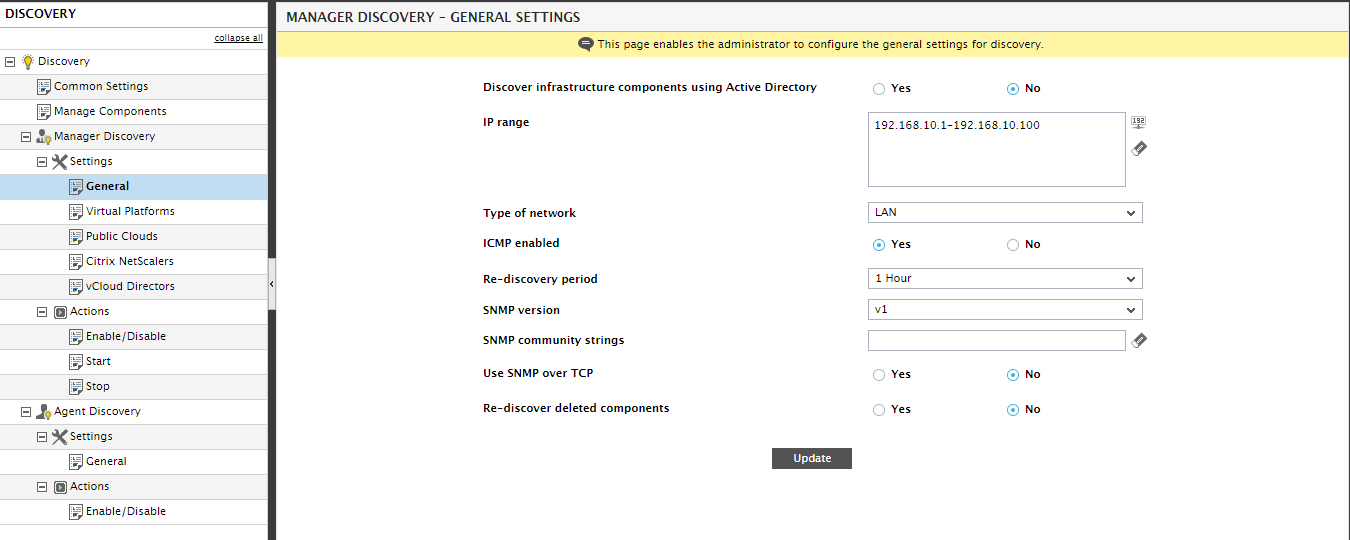
-
Provide the IP range for discovery, and click the Update button. This will instantly begin discovery. Control will also automatically switch to the Start sub-node under the Actions node in the tree-structure in the left panel of Figure 2. This indicates that discovery has begun. By default, discovery will scan the environment for port number 902 - this is the default port at which vSphere servers listen. All servers listening on port 902 will then be automatically discovered as both VMware vSphere ESX servers and VMware vSphere VDI servers.
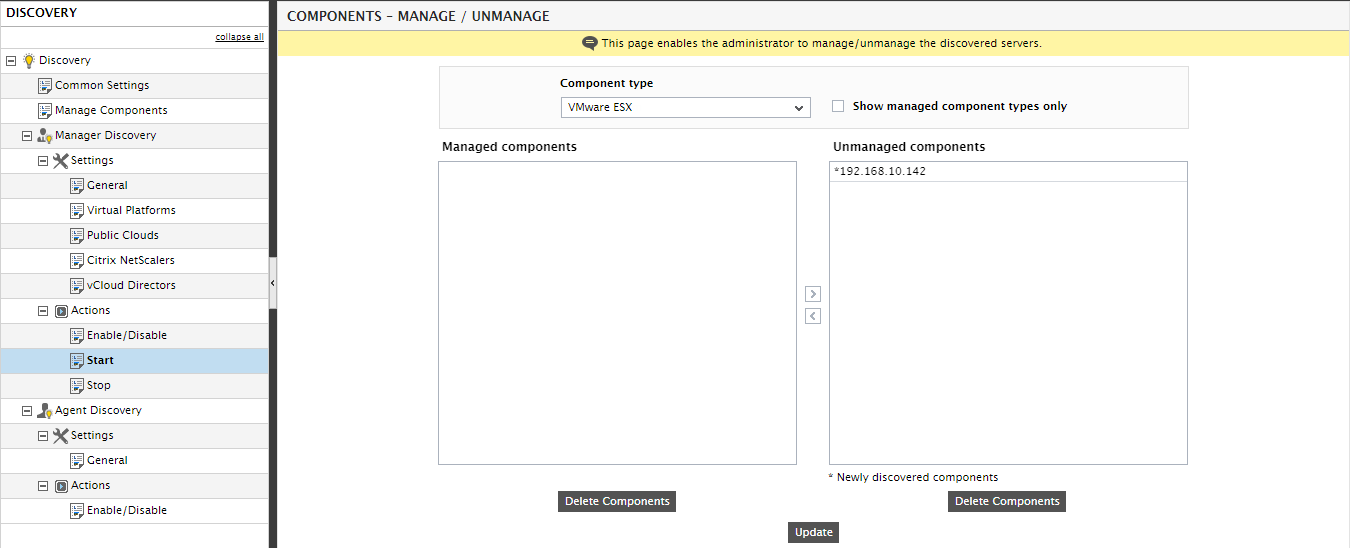
Figure 2 : A VMware ESX server automatically discovered and displayed
It is recommended however, that you use the vCenter server for auto-discovering VMware ESX servers. This is because, the port-scanning technique discussed above might not be suitable for high-security environments where the firewall has been configured to block traffic to and from specific ports. Likewise, in environments that are spread across multiple sub-nets, discovery performed using ports could increase the bandwidth consumption. To address these concerns, eG Enterprise provides you with the option to directly connect to one/more VMware vCenter installations in your environment to perform ESX discovery.
To discover ESX using vCenter, do the following:
- Select the Virtual Platforms node from the tree-structure in the left panel of Figure 1. Then, choose the vSphere/ESX Hosts option from the Choose a virtual platform to discover drop-down in the right panel (see Figure 3). If one/more vCenter servers have already been added to enable the discovery of vSphere/ESX servers, the details of the same will be displayed in the right panel. If no vCenter servers pre-exist, then a message to that effect will appear in the right panel. In this case, proceed to add a new vCenter server.
-
Prior to vCenter creation, you might have to increase the memory settings of the eG manager. This is because, VI APIs are memory intensive, and therefore, the default memory setting of 128 MB for the eG manager might not be sufficient for performing ESX discovery via vCenter. To override this default setting, select the Configure memory settings for discovery option from the What would you like to perform? drop-down list in the right panel of Figure 3. A Virtual Center Memory Settings section will appear in the right panel, as shown by Figure 3.
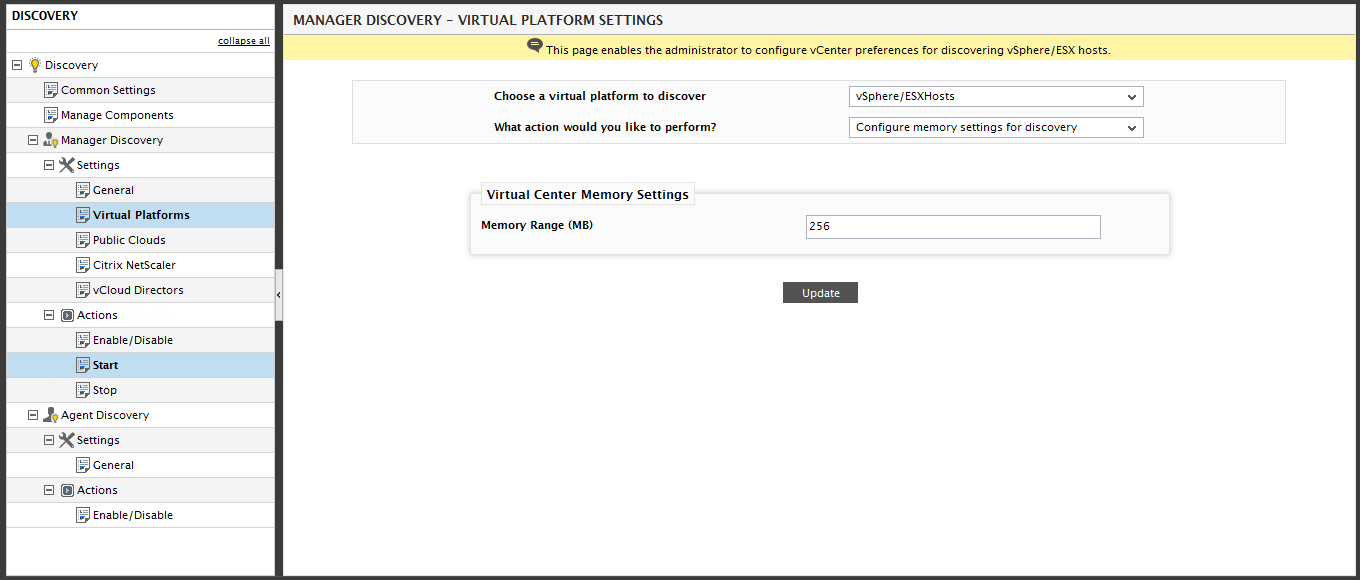
Figure 3 : Overriding the default memory settings of the eG manager
You can specify any value between 256 MB and 1024 MB in the Memory Range (MB) text box in Figure 3, and click the Update button therein.
Next, you can proceed to add a new vCenter. To add a new vCenter server, do the following:
-
Select the Add new vCenter option from the What action would you like to perform? drop-down in the right panel (see Figure 4).
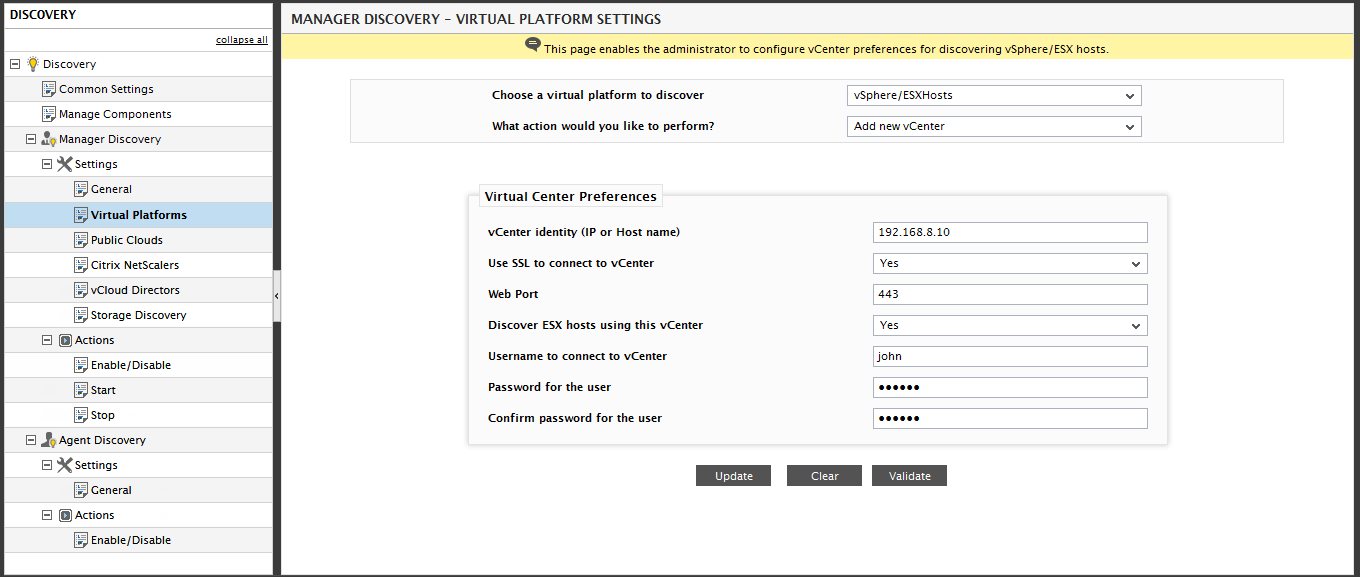
-
Then, specify the following in right panel of Figure 4:
-
Specify the IP or host name of the vCenter in the vCenter identity text box.
Note:
When providing the IP address of the vCenter server against vCenter identity, you can specify either the IPv4 or the IPv6 address of the vCenter server.
- Then, indicate whether the eG manager is to connect to vCenter using SSL or not by selecting the Yes or No option from the Use SSL to connect to vCenter list. By default, this flag is set to Yes.
- By default, in most virtualized environments, vCenter listens on port 80 (if not SSL-enabeld) or on port 443 (if SSL-enabled) only. This implies that while discovering ESX servers using vCenter, eG Enterprise communicates with vCenter via the default ports 80 or 443, depending upon the SSL-enabled status of vCenter. Accordingly, the Web Port parameter in Figure 4 is set to 443 by default, if the ssl flag is set to Yes, and displays the default value 80 if the ssl flag is set to No. In some environments however, the default ports 80 or 443 might not apply. In such a case, in the Web Port text box, specify the exact port at which vCenter in your environment listens.
- Typical virtualized environments may consist of multiple vCenter installations, each managing a different set of ESX servers. To enable the eG manager to automatically discover those ESX servers that are managed by the vCenter being added, then set the Discover ESX hosts using this vCenter flag to Yes. If not, then set it to No.
- In order to be able to discover ESX servers using a vCenter server, the eG manager needs to connect to vCenter using the credentials of a valid user to vCenter. Provide the user name and password of such a user in the Username to connect to vCenter and Password for the user text boxes. This user typically requires Administrator or Virtual Machine Administrator privileges. However, if you cannot expose the credentials of such a user owing to security constraints, then, you can use the credentials of a user with ‘Read-only’ privileges to vCenter. If such a user pre-exists, then, provide the name and password of that user in the text boxes mentioned above. Otherwise, assign the ‘Read-only’ role to a local/domain user to vCenter, and provide the name and password of this user in the Username to connect to vCenter and Password for the user text boxes. The steps for achieving this are detailed in the Creating a Special Role on vCenter and Assigning the Role to a Local/Domain User topic.
- Confirm the password of the user by retyping it in the Confirm password for the user text box.
- To clear all the configured details, click on the Clear button in Figure 4. To start discovery instead, click on the Update button.
-
Clicking on Update brings up Figure 5, which requests you to confirm whether you want to start discovery based on the specifications provided. Click the Yes button to begin discovery.
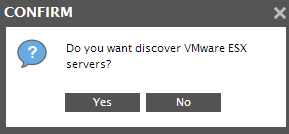
- Triggering ESX discovery will lead you straight to the COMPONENTS - MANAGE/UNMANAGE page of Figure 2.
-
When discovering ESX servers via vCenter, the eG manager also auto-discovers the type of VMs that are running on the discovered ESX servers. If an ESX server supports only desktop VMs, then such ESX servers are discovered and VMware vSphere VDI servers. If an ESX server supports server OS VMs or Linux VMs, then such ESX servers will be discovered as VMware vSphere ESX servers.
